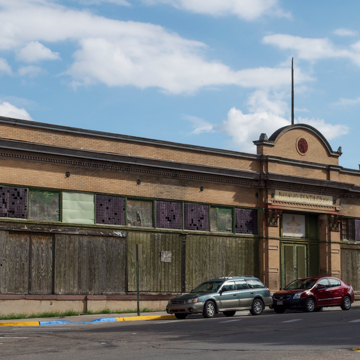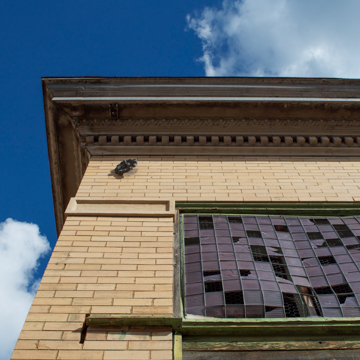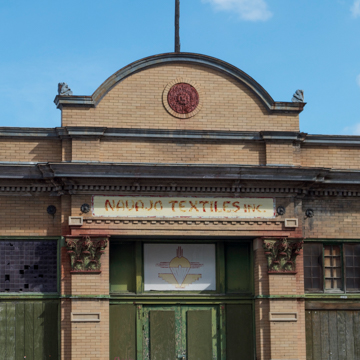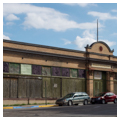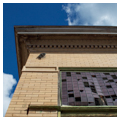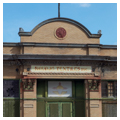You are here
Emmanuel Rosenwald Building
Like the Charles Ilfeld Building on the opposite side of the Las Vegas Plaza, the Emmanuel Rosenwald Building records both the city’s place as a booming mercantile center in the late nineteenth century, and the role of German-Jewish immigrants in developing it as one of New Mexico’s three main urban centers at the turn of the century. It also reflects changing formal preferences at a time when Beaux-Arts classicism had become a new sign of progress.
An immigrant from Bavaria, Emmanuel Rosenwald arrived in Las Vegas in 1862, where he established himself as a successful merchant and financier. His sons, Aron [ sic] and Edward, commissioned the present building in 1908, one year before they also commissioned the Rosenwald Building in Albuquerque. It is the third to stand on this site on the south side of the Plaza.
While Charles Ilfeld’s Great Emporium initially served both retail and wholesale trade at its opening in 1883, the Rosenwald Building functioned solely as a wholesale establishment. To advertise its ambitions, the building adopted a local version of the Beaux-Arts classicism popularized by the 1893 World’s Columbian Exposition in Chicago. The one-story brick and sandstone facade is articulated with the tripartite elevation of a schematic Doric order; base, piers, entablature, and a projecting cornice with metal dentils stand beneath a raised attic parapet. This simple scheme is interrupted by the composite piers, arched pediment, and terra-cotta rose medallion with the Rosenwald name that decorate the central entrance portal.
The Rosenwald Company thrived until the 1920s, when it was closed following the onset of a rural depression in New Mexico. In the 1950s, the building was repurposed as a factory for the production of military parachutes during the Korean War; at this time, the logo of the Jayval and Navajo Textiles Factory—a parachute inscribed within the form of a Zia—was added to the entrance entablature. At its height, the factory employed over 300 workers and played a significant role in sustaining the Las Vegas economy until it closed in 1977.
The building is currently vacant and closed to the public.
References
Nelson, Kate. “Vegas Revival.” New Mexico Magazine, July 2014.
Stein, Diana G. “Emmanuel Rosenwald Building,” New Mexico State Register of Cultural Properties Registration Form. Santa Fe, NM, New Mexico Historic Preservation Division, 1978.
Threinen, Ellen. Architecture and Preservation in Las Vegas: A Study of Six Districts. Las Vegas: Design Review Board, City of Las Vegas, New Mexico, 1977.
Writing Credits
If SAH Archipedia has been useful to you, please consider supporting it.
SAH Archipedia tells the story of the United States through its buildings, landscapes, and cities. This freely available resource empowers the public with authoritative knowledge that deepens their understanding and appreciation of the built environment. But the Society of Architectural Historians, which created SAH Archipedia with University of Virginia Press, needs your support to maintain the high-caliber research, writing, photography, cartography, editing, design, and programming that make SAH Archipedia a trusted online resource available to all who value the history of place, heritage tourism, and learning.














